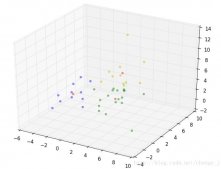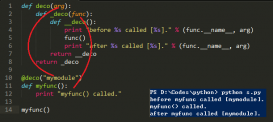PyTorch: https://github.com/shanglianlm0525/PyTorch-Networks

|
1
2
3
4
5
6
7
8
9
10
11
12
13
14
15
16
17
18
19
20
21
22
23
24
25
26
27
28
29
30
31
32
33
34
35
36
37
38
39
40
41
42
43
44
45
46
47
48
49
50
51
52
53
54
55
56
57
58
59
60
61
62
63
64
65
66
67
68
69
70
71
72
73
74
75
76
77
78
79
80
81
82
83
84
85
86
87
88
89
90
91
92
93
94
95
96
97
98
99
100
101
102
103
104
105
106
107
108
109
110
111
112
113
114
|
import torchimport torch.nn as nnimport torchvisionimport numpy as npprint("PyTorch Version: ",torch.__version__)print("Torchvision Version: ",torchvision.__version__)__all__ = ['ResNet50', 'ResNet101','ResNet152']def Conv1(in_planes, places, stride=2): return nn.Sequential( nn.Conv2d(in_channels=in_planes,out_channels=places,kernel_size=7,stride=stride,padding=3, bias=False), nn.BatchNorm2d(places), nn.ReLU(inplace=True), nn.MaxPool2d(kernel_size=3, stride=2, padding=1) )class Bottleneck(nn.Module): def __init__(self,in_places,places, stride=1,downsampling=False, expansion = 4): super(Bottleneck,self).__init__() self.expansion = expansion self.downsampling = downsampling self.bottleneck = nn.Sequential( nn.Conv2d(in_channels=in_places,out_channels=places,kernel_size=1,stride=1, bias=False), nn.BatchNorm2d(places), nn.ReLU(inplace=True), nn.Conv2d(in_channels=places, out_channels=places, kernel_size=3, stride=stride, padding=1, bias=False), nn.BatchNorm2d(places), nn.ReLU(inplace=True), nn.Conv2d(in_channels=places, out_channels=places*self.expansion, kernel_size=1, stride=1, bias=False), nn.BatchNorm2d(places*self.expansion), ) if self.downsampling: self.downsample = nn.Sequential( nn.Conv2d(in_channels=in_places, out_channels=places*self.expansion, kernel_size=1, stride=stride, bias=False), nn.BatchNorm2d(places*self.expansion) ) self.relu = nn.ReLU(inplace=True) def forward(self, x): residual = x out = self.bottleneck(x) if self.downsampling: residual = self.downsample(x) out += residual out = self.relu(out) return outclass ResNet(nn.Module): def __init__(self,blocks, num_classes=1000, expansion = 4): super(ResNet,self).__init__() self.expansion = expansion self.conv1 = Conv1(in_planes = 3, places= 64) self.layer1 = self.make_layer(in_places = 64, places= 64, block=blocks[0], stride=1) self.layer2 = self.make_layer(in_places = 256,places=128, block=blocks[1], stride=2) self.layer3 = self.make_layer(in_places=512,places=256, block=blocks[2], stride=2) self.layer4 = self.make_layer(in_places=1024,places=512, block=blocks[3], stride=2) self.avgpool = nn.AvgPool2d(7, stride=1) self.fc = nn.Linear(2048,num_classes) for m in self.modules(): if isinstance(m, nn.Conv2d): nn.init.kaiming_normal_(m.weight, mode='fan_out', nonlinearity='relu') elif isinstance(m, nn.BatchNorm2d): nn.init.constant_(m.weight, 1) nn.init.constant_(m.bias, 0) def make_layer(self, in_places, places, block, stride): layers = [] layers.append(Bottleneck(in_places, places,stride, downsampling =True)) for i in range(1, block): layers.append(Bottleneck(places*self.expansion, places)) return nn.Sequential(*layers) def forward(self, x): x = self.conv1(x) x = self.layer1(x) x = self.layer2(x) x = self.layer3(x) x = self.layer4(x) x = self.avgpool(x) x = x.view(x.size(0), -1) x = self.fc(x) return xdef ResNet50(): return ResNet([3, 4, 6, 3])def ResNet101(): return ResNet([3, 4, 23, 3])def ResNet152(): return ResNet([3, 8, 36, 3])if __name__=='__main__': #model = torchvision.models.resnet50() model = ResNet50() print(model) input = torch.randn(1, 3, 224, 224) out = model(input) print(out.shape) |
以上这篇PyTorch实现ResNet50、ResNet101和ResNet152示例就是小编分享给大家的全部内容了,希望能给大家一个参考,也希望大家多多支持服务器之家。
原文链接:https://blog.csdn.net/shanglianlm/article/details/86376627












